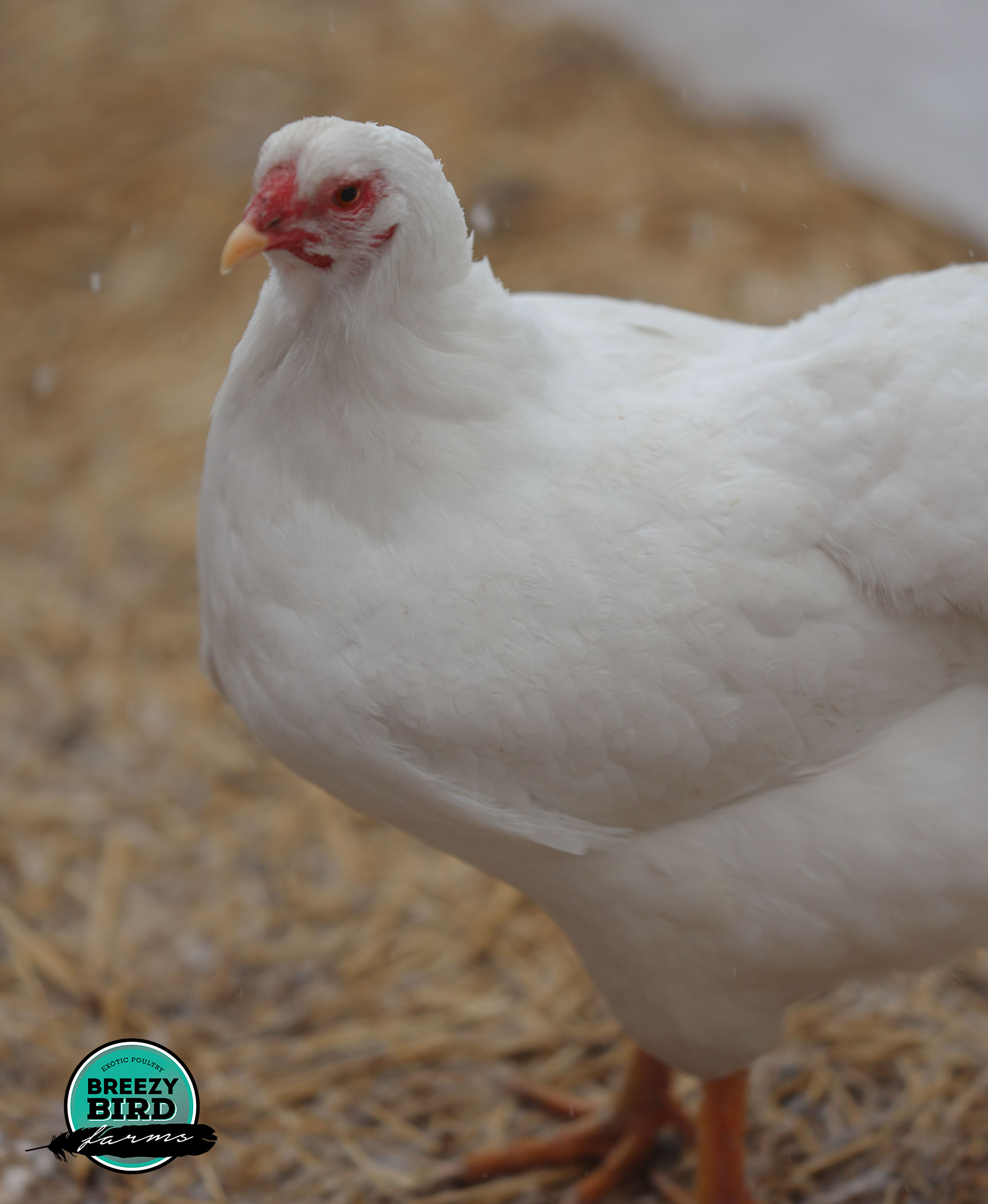Chantecler chickens were developed in the early 20th century in Canada and are one of the few poultry breeds created specifically for cold northern climates. The breed was developed at the Dominion Experimental Farm in Ottawa, with a focus on practicality, winter hardiness, and reliable productivity under Canadian conditions.
Breeding efforts emphasized compact body structure, frost-resistant features, and steady egg production during colder months. Several hardy breeds were used in the development of the Chantecler, resulting in a well-balanced, efficient dual-purpose bird suited to long winters and variable weather. 
Chanteclers are valued for their resilience, calm disposition, and dependable performance, particularly in regions where cold tolerance is essential.
Origin:
Canada (Ottawa, Ontario)
Weight:
Hens: 5.5–6.5 lbs
Roosters: 7.5–8.5 lbs
 Appearance:
Appearance:Body Type:
Medium to large, compact, and well-muscled with a broad, solid build
Feathering:
Dense white plumage designed for insulation and protection in cold climates
Comb:
Rose comb, small and close-fitting to minimize the risk of frostbite
Egg Color: Brown/tinted eggs
Egg Size: Medium
Production Rate: Approximately 3–4 eggs per week, including winter months
Generally calm, steady, and even-tempered
Well-suited to family environments and mixed flocks
Exceptionally cold-hardy; developed specifically for harsh winter conditions
Performs reliably in northern and variable climates
Some hens may exhibit broodiness, making them suitable for hatching eggs.
Chantecler chickens are known for their composed nature and consistency. They tend to be less flighty than many lighter breeds and integrate well into established flocks.
 Adaptable:
Adaptable:They perform well in both free-range and more confined environments when provided appropriate care.
Chanteclers forage efficiently when given access to pasture, contributing to their overall hardiness and condition.
© Copyright Breezy Bird Farms